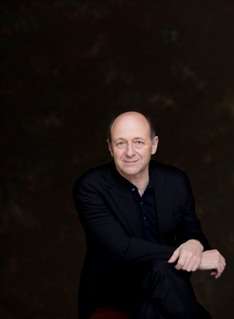|
Back
To Be An American New York
David Geffen Hall, Lincoln Center
11/26/2016 -
Antonín Dvorák: String Quartet No. 12 in F major (“American”), Op. 96 – Symphony No. 8 in G major, Op. 88
Frank Huang, Sheryl Staples (violins), Cynthia Phelps (viola), Carter Brey (cello)
New York Philharmonic, Iván Fischer (conductor)

I. Fischer
“Dvorák’s enthusiastic interest in the American musical heritage suggested to a few composers the possibility of using national materials in symphonic works; but the composers of this group...lacked both the genius and the social encouragement to do for the United States what Glinka, Balakirev and Mussorgsky had done for Russia.”
Donald Jay Grout, A History of Western Music
The New York Philharmonic does some things well and some things not so well, but one of their most enjoyable innovations is the Saturday matinee series which includes a chamber work followed by an orchestral one. This combination is edifying in that one experiences an immediate contrast between music for a few instruments and music for a huge ensemble, with each being presented in an enormous hall. The clash of dynamics, timbres and the juxtaposition of thematic styles of development are always interesting. Plus the combination is unique, at least in New York.
Some members of the American generation that were born around the time of the Great War reacted somewhat patronizingly to chamber music once they matured. A friend used to say that this style of sound belonged in a hotel lobby, not a concert hall. However, Schumann’s Piano Concerto was actually premiered in a crowded hotel lobby the day before its “actual” premiere in Leipzig. Clearly there is an acoustical anomaly that comes through in these sporadic Philharmonic events. Vive la différence!
With compensating movable walls on the stage, the string quartet comprised of first chair players dug in to the “American” Quartet. The jury is still out on Frank Huang, the new concertmaster. He possess a fine tone and is reliably unobtrusive, a refreshing change from the old first violinist Glenn Dicterow, whose sound can best be described as “Hollywood at sunset”. I prefer the body of work of Sheryl Staples, longtime principal associate, who literally plays second fiddle to both of these men, and many were disappointed when she was passed over for the position when Dicterow fortuitously retired. What is unclear is whether or not she demurred when and if asked. In any case she is still a major part of this orchestra’s appeal.
The offering of the “American” Quartet was a strong one. The first movement was perhaps not intense but rhythmically beautiful like a barcarolle. The applause at its conclusion did not seem out of place. The Lento would have been more expressive if there had been a stronger contrast in the dynamics when themes were repeated, but overall the quartet produced quite a sensitive sound. The final two sections were tight but not broad and could have used a more excited emotional base. But overall this was a seamless and professional traversal.
With the backdrop gone, the full Phil offered the Dvorák 8. Iván Fischer co-founded the Budapest Festival Orchestra with Zoltán Kocsis in 1983. Mr. Kocsis passed away earlier this month and was arguably the greatest musician on the planet. Hearing him perform Bartók in 2001 compelled me to write: “I was reminded of why I chose to devote my life to music in the first place. This was a spectacular performance.” Undoubtedly Mr. Fischer feels the loss deeply, but soldiers on.
With Ms. Staples now the concertmaster pro tempore, the orchestra launched what would be a spectacular offering of the symphony. With virtually all of the first chair players absent (this was the Thanksgiving weekend), the sound and commitment of the ensemble was superior (jes’ sayin’). Maestro Fischer shuffled the deck and realigned the band out of its normal platform positioning, arranging the strings antiphonally (this is very rare for this group over the past twenty years, in fact I can only remember it sitting this way when Christoph von Dohnányi came to guest conduct) and aligning a central rear elevated platform with the double basses, producing a very strong and throbbing sound throughout.
This performance, with its unique phrasing, reminded that its composer came from that Central European milieu of Bohemia, Austria, Hungary and Romania that was strongly influenced by Jewish music, the boiling melting pot that also produced Mahler. Color contrasts and thematic dramatic development were presented in depth to a packed house that applauded enthusiastically after each movement (I am no sociologist, but would wager that at least seventy-five percent of this audience came from the same ancestral background). Fischer dealt with the applause in a gentlemanly manner, making slight bows to the crowd after each section. Hopefully this performance was recorded. For me, although the season is still young, this was the strongest enunciation of any piece thus far.
Dvorák might have had a much greater and timelier influence on American music except for one chance occurrence. In Vienna, Mahler had been a champion of the Bohemian composer, mounting his operas in successful premieres. On his last trip home to Vienna after another season leading the New York Philharmonic, Mahler brought a copy of the manuscript of an unperformed symphony, the mighty Third of Charles Ives, planning to study the music of this relative unknown aboard ship and already thinking seriously of mounting its first performance. But “Friend Death Came to Call” and the great composer never returned. Ives soon after went into musical seclusion, but had his and Dvorák’s works been given fine public hearings under Mahler, who knows whether that new generation of American composers would have come to the fore much earlier.
Fred Kirshnit
|